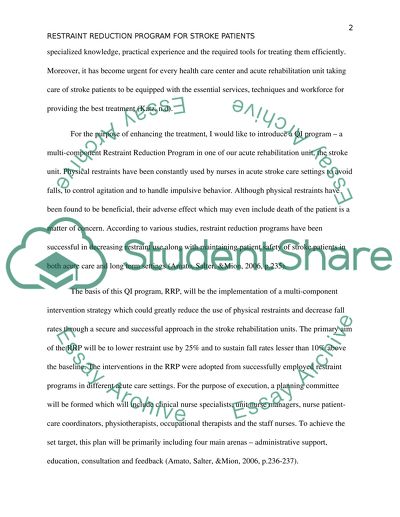Restraint reduction program for stroke patients Assignment. Retrieved from https://studentshare.org/nursing/1456352-executive-summary
Restraint Reduction Program for Stroke Patients Assignment. https://studentshare.org/nursing/1456352-executive-summary.


